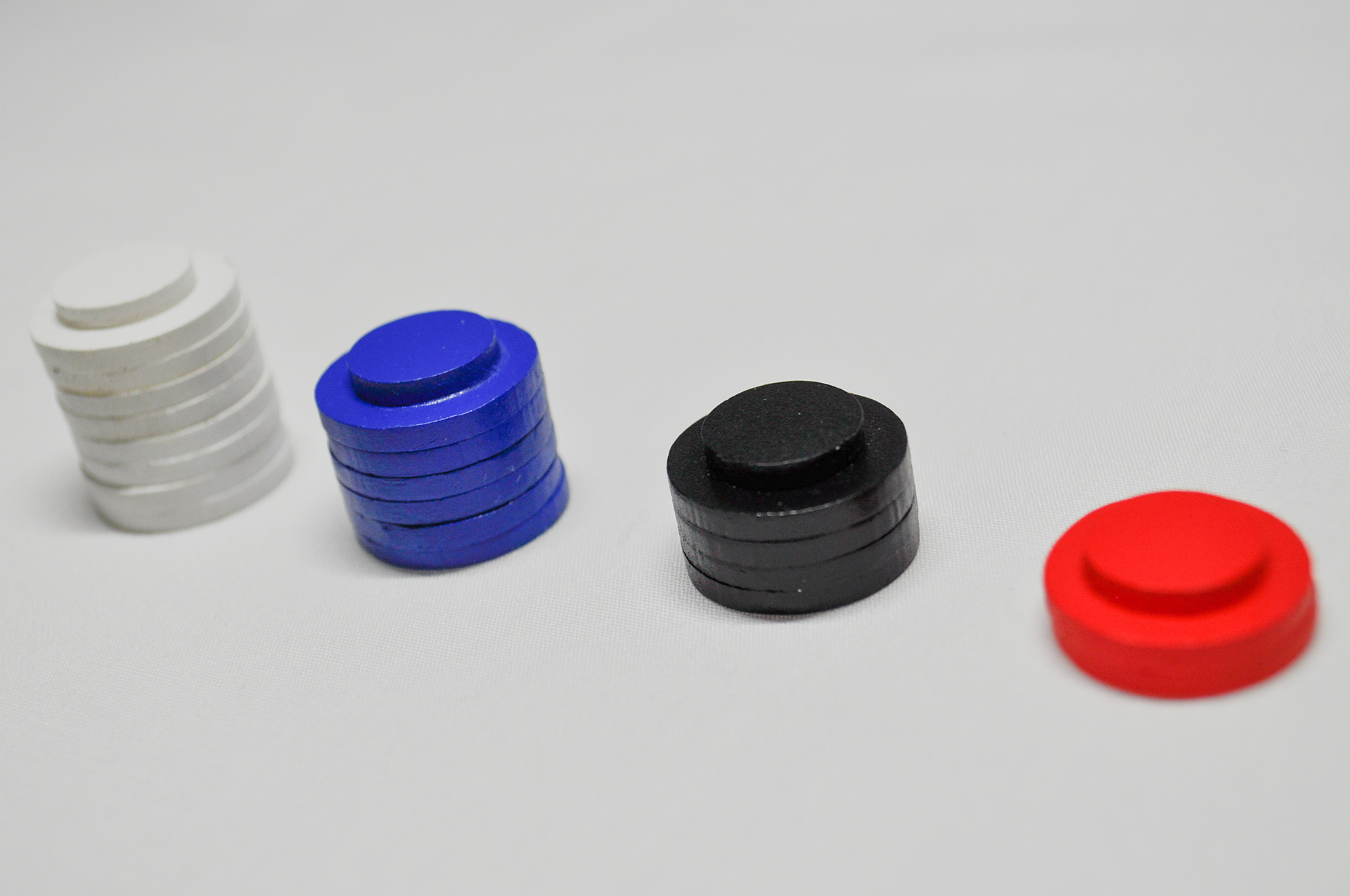Yut Nori is a popular Korean board game. It has been played for hundreds of years and consists of players moving four horses (tokens) through a series of stations. The goal of this project was to create a physical game board with interactive electrical displays.


The final design consisted of three main interactive components within the game board circuit. First, there is one LED per player. The LEDs are used to indicate to the players whose turn it is. In this way, only one LED will be powered at a time and that respective LED will be on for the entirety of that players turn.
Next, buttons are used to start the game, end the game, finish turns, and change an individual's score. For my project, I used three separate push buttons. One button is used to add points to a players score, one is used to subtract points from a players score (just in case mistakes were made in adding points). The last button is held for a few seconds to start a game and once on, is used to switch between players. Once gameplay is done, pushing down on this button for a few seconds will shut the board off. Once this is done, the scores will be reset.
Each player’s score (the number of horses they have returned) is displayed using a seven segment display. Because I wanted this game board to handle up to four players, I’d need a way to control at least 28 individuals pins. That's where shift registers came in handy. I utilized one shift register per seven segment display. This meant that in my final circuit, I had four daisy chained shift registers.



The housing for the circuit was made with acrylic sheets. This way exact holes could be made using a laser cutter to fit the seven segment displays, LEDs, and buttons.






The player tokens were also made with acrylic. They are designed to be stackable and come in four different colors, one for each player. For more information on how the game board was made, please take a look at the tutorial I wrote for SparkFun Electronics.









